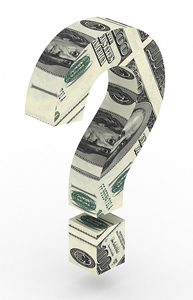Which Trade Show is Right for you?
It is an age old question – should we exhibit? This question surfaces on a regular basis in all marketing departments. There are certain shows, based on their great performance in the past, that are no-brainers. But there can be others which you may not know much about.
 Ask Customers and Prospects about the Trade Shows They Attend
Ask Customers and Prospects about the Trade Shows They Attend
The first point is to simply ask others about the trade shows that they like and attend. Make it a habit to ask customers and prospects alike “which trade shows do you attend?”
- Which is the “best” one for finding new products?
- How are the shows different and what makes them different?
- If they often attend more than one – which one is most important?
- Which one would they skip if they had to choose?
- Which show(s) have caught their attention, but haven’t yet made a priority?
You might consider conducting a short survey that can be sent out to your prospects and customers to solicit their responses. There are many free survey tools available to use, like Survey Monkey, Zoomerang, and others.
Talk with the Trade Show Organizer
The show organizer’s job is to be an expert on who attends their events. Typically they have concrete, measurable registration surveys and audits for you to view. Initially, you can review their prospectus; then, if it looks like a fit for you, call them directly. They know that a successful show is predicated on the right buyers finding the right vendors. Consequently, they make a science out of profiling their customers, and you should too.
To begin profiling your customer, start with these questions: Who do you want to attract to your exhibit booth? Who are the ideal customers for your product and/or service and what is important to them? Depending on whether your market is, business to consumer, or business to business, the criteria will be different. Regardless of the specific terms, you will need to define your customer. The broad range of data categories are: demographics (who is my customer), psychographics (what do they do), behavioral (how do they do it) and causation (why they do what they do). According to Barry Siskind in an article called The Right Place to Exhibit – A Strategic Approach, “causation is the sum total of all the demographic, psychographic and behavioral data you have accumulated. It matches up your features and benefits with your customers’ perception of their importance.”
As you profile your target audience, you can ask questions to find out where they are and the best way to reach them. Given that shows have various geographic focuses (regional, national or international), you will want to choose those ideally suited to both you and the audience you serve. Ultimately, you have plenty of choices, though finding the right trade show can be challenging. “The right show is a blend of audience, cost and logistics. Good event selection is a solid base upon which the rest of your exhibit program is built,” Siskind reminds us.
Resources for Locating Trade Shows
If you need to look up a show, here are several online resources for you.
Events in America: www.eventsinamerica.com
Trade Show News Network: www.tsnn.com
The Trade Show Calendar: www.thetradeshowcalendar.com
Selecting the right trade show is just the beginning of the process.
Trade Show Targeting – What Makes My Customer Tick?
Understanding the business concerns, issues and problems of your prospects and customers is paramount in crafting a marketing message. This message is a critical component of your trade show plan, as well as your business marketing plan as a whole. However, it is not easy to tap into their minds. This process requires market research to effectively derive their characteristics for purchasing. During the last few years, the buying patterns have changed and possibly your customer persona has evolved into a totally different person. Keeping up with the shifts and changes can be difficult.
 One way to tune into the mindset of a customer base is using focus groups. They can be quite effective in uncovering the thought processes and preferences of an audience. If you are not familiar with this research form, let me provide some additional information.
One way to tune into the mindset of a customer base is using focus groups. They can be quite effective in uncovering the thought processes and preferences of an audience. If you are not familiar with this research form, let me provide some additional information.
What are Focus Groups?
Focus Groups are great at capturing the attitudes and opinions of a “selected” group(s) of individuals. The moderator poses questions to the group affording the participants the opportunity to share their views. It is important to remember that these groups are qualitative in nature and sometimes would need to be followed up with a quantitative research project to ensure statistical reliability.
However, the catalytic nature of focus groups can provide direction as to what the next steps should be in the evolution of the idea being tested.
In essence – you are testing ideas or communication messages to determine if they are on target or not. Customer and prospect language or what they “hear” can be TOTALLY different from what you are communicating. Being in tune with your audience can spell s-u-c-c-e-s-s.
Using Online Research to Probe the Minds of Your Customer
Rather than in-person focus groups, participants are recruited for the online experience. Typically, 12 – 15 are secured and they commit to the process.
- A research moderator posts questions over the course of several days as the conversation evolves and probes respondents for details and clarifications when needed.
- Respondents can log in and answer each days’ questions whenever it’s convenient for them – some folks are online at the crack of dawn, some like to log in and take a break during work hours and others log in after dinner is done and the kids are in bed. Being convenient means that respondents can take time to think about the questions and provide thoughtful answers.
- Clients are able to log in and observe the discussion and leave private messages for the moderator regarding comments they would like clarified or suggestions for new topics.
- They last over a three-day period which allows for reflection on questions answered and possible modifications to the moderator’s script.
The participants interact with each other and the moderator as they provide their valuable insights to questions posed. In the process, all sorts of light bulbs are illuminated and most often a new, enhanced direction is revealed.
Mike Courtney from Aperio Insights shares these insights when considering online focus groups to determine your trade show messages.
Most likely there is a current marketing communications campaign going on within your company. Does your audience really understand the campaign or is there some confusion on the message you are attempting to convey?
Or you can assess whether your prospects deem you as a trustworthy resource. Or do they trust your competition more than you?
Have the prospect or customer “explain” your services or products to the moderator of the online focus group. Are they accurately defining your offering? Note: this question can be quite revealing as to how far off the mark your audience is to what your product does or what your marketing message is.
One other word of note – research can beget research. The more you uncover – additional questions will surface.
As you research and make your trade show marketing plan, consider taking the pulse of your customers. If you can translate their heartbeat (the business issues) into your marketing message, a match is made and most likely you will have a new customer.
Making Sure Your Booth Gets to the Trade Show
This horror story happens – you are at the show, but your booth isn’t! Somehow it was lost or misplaced in transit. This post covers the basics of transporting your booth property to the show site. It is important to note, this is one area where you can experience savings by planning ahead.
 Candy Adams, in her article on Exhibitor Online Lost in Transportation provided 12 questions you should ask regarding transportation to avoid any snafus. One question is, “where is your freight going?” Her response:
Candy Adams, in her article on Exhibitor Online Lost in Transportation provided 12 questions you should ask regarding transportation to avoid any snafus. One question is, “where is your freight going?” Her response:
The quickest way to not get your shipment to a show is to provide inaccurate or incomplete shipping information. But there’s more to getting your freight from Point A to Point B than filling out a shipping label and affixing it to a box. Specifically, you need to tell your transportation carrier whether the shipment needs to go to the trade show’s advance warehouse, or direct to the show site. If you don’t make the distinction, you might be sitting in your booth space waiting for your freight to arrive from the advance warehouse, while it’s still en route direct to the show and set to arrive the following day. Not only will you not have your freight, but your setup costs will escalate as the installation laborers twiddle their thumbs until it arrives. What’s more, the additional day it takes the freight to travel direct to show site can result in late-delivery penalties if you miss your on-site targeted delivery deadline.
As Candy stated, you have choices on how you can ship your materials to the show. You can ship them to:
Advanced Warehouse by a certain date
-Or-
Direct Deliveries to the Show Site on specific dates
Each show will have a designated shipping company for you to use and their information can be obtained in Exhibitor Kit supplied by show management. However, you may have a preferred carrier, one you use regularly.
Key Questions which Determine Freight Costs
As you are working with the transportation issues, these are key pieces of information which will determine the cost of freight:
- Number of Pieces
- Estimated Weight
- Estimated Size
- Addresses for Pickup/Delivery
Remember, items that arrive after the receiving deadlines can incur additional charges. Once again, you can save money by planning ahead!
An important note: make sure you have the address of the venue correct. Candy shares in her article:
There can be confusion, especially in major cities, if a specific street address or hall designation isn’t provided. I’ve witnessed freight delivered to the wrong convention center in cities with multiple exhibition facilities, and to the wrong Marriott or Hilton since there can be multiple chain hotels in metropolitan areas. Unless you want your carrier to guess which venue is the correct destination, provide the full venue name and street address.
Transportation Timing and Charges
The shorter the transit time, the higher the charges are for most deliveries. Here is a brief summary for your review.
- The lowest charges are usually common carriers, but unless you pay a large premium, you cannot designate the delivery date. This works mostly for advance receiving shipments but does not work at all for direct to show site shipments.
- Next lowest is the 3-5 business day. Lots of flexibility in that the shipper can designate day and time to deliver as long as we have at least 3 business days. If they designate a time, or if the day is on the weekend or a holiday, there is an extra charge.
- The 2nd Business day is still higher priced. The shipper can still designate date and time.
- Overnight is higher still.
- Same Day is the highest cost, and it will be delivered as quickly as possible.
Transportation companies designated by show management or those you have used in the past can be great resources for you. If you are new to this, ask questions. Typically, you will find great advice from them and if you plan ahead you can save money.
Transportation problems can be avoided by careful planning. This is an area where you want time to be on your side by advance scheduling.
Staff Your Trade Show Exhibit to Win!
 Anyone who has attended a trade show can tell you that the best booth, in the best location, with the best promotion, may not get the sale if you do not put together the right team to represent your company.
Anyone who has attended a trade show can tell you that the best booth, in the best location, with the best promotion, may not get the sale if you do not put together the right team to represent your company.
Overall, you are looking for people who are fun to be with and who can help bring your booth to life. Here is a checklist of critical factors to consider when selecting your team.
- Make sure you have the right number of people to staff the booth. It depends on the type of show, your business sector and the type of promotional campaign you plan. A good rule of thumb is one person for every 50 square feet of booth space, including break coverage.
- Make sure that the people staffing your booth have an appearance that is consistent with your brand and trade show campaign.
- Look for people who are naturally friendly and outgoing, and who smile. You want people who are eager to meet attendees.
- Select people who are good listeners and who know how to ask open-ended questions that encourage prospects to talk about their needs.
- Choose team members who know your business sector or who can be quickly trained to knowledgeably answer questions. It is best to select people who know your product, your company and its capabilities, and who know the competition.
- Think about attire and set a dress code. Don’t leave this critical element to chance. Make sure your entire team is willing to follow the dress code.
Once you have selected your team, make sure they have the tools they need and are properly trained to represent your company, qualify leads and secure sales.
Tips for Selecting the Right Trade Shows
Making the decision to exhibit at a trade show is a significant commitment—in both time and expense—for any size company. Trade shows can deliver significant bottom-line benefits by generating valuable sales leads, increasing company awareness, launching new products or services, building brand recognition, finding new channel members and gaining media attention. In order to successfully achieve any of these, however, you must first select the right trade show for your company.
 If you are the person tasked with this selection process, the burden is on you to make an informed decision, selecting shows that will deliver the right target audience for your marketing message. Here are a few questions to ask when evaluating your trade show options:
If you are the person tasked with this selection process, the burden is on you to make an informed decision, selecting shows that will deliver the right target audience for your marketing message. Here are a few questions to ask when evaluating your trade show options:
What are my goals? You first must determine your objectives for the show so you can choose the show that will give your company the best return on investment (ROI) in terms of your goals. If your goal is on-site sales, picking a show where there are dozens of competitors selling similar products will be a bust and a colossal waste of money.
Who will be there? Your first step will be to quantify the total number of relevant prospects, buyers, and influences who will be interested in your company’s products or services. Obtain an Exhibitor’s Registration Kit and look at the attendee profile of previous shows, including job title, industry representation, type of business, and geographical distribution.
Does size really matter? Bigger isn’t really necessarily better. Really. The size of the show should match your goals sales leads, units sold, etc.). If you’re a smaller company, it might be difficult to stand out at big trade shows, whereas at a smaller one you might be more noticeable. Smaller ones, however, won’t generate the same high number of leads as larger shows so you’ll have to weigh the pros and cons of both and how they relate to your overall objectives.
Will your competitors be there? Though you might not like competing for the same mindshare, the proximity of competitors in one place can be a boon for your business. Find out in advance which of your competitors are going to be there. This actually can help you formulate a winning strategy and effective marketing message specific to that show. What new products are you introducing? And, how and why are they better than your competitor’s?
Is it the right choice? Though you’ll never know for sure in advance whether a trade show is going to deliver a return on your investment, there are some ways to hedge your bets. Ask yourself whether this show is well aligned with the core competencies of your business or just one facet of its offerings? Is the right audience going to participate? Can my company stand out and be unique on the show floor?
What about media coverage? Ask for last year’s press list. Do any of these publications reach your target customers? Do you have a compelling story to tell them? If so, this show might be a good fit.
How to Make Exhibits Eco-Friendly
According to the Environmental Protection Agency (EPA), trade shows are the #2 producer of waste in the U.S., following the construction industry, a dubious honor indeed. So what can you do as an exhibitor to be more environmentally responsible? Though it would be difficult, if not impossible, to have a tradeshow exhibit that’s is 100% sustainable, the goal of many companies is to move more in the “green” direction. Doing so might not be as difficult as it once was as many exhibit companies are now offering more and more sustainable exhibits.
 What makes it eco-friendly? Good question. Let’s take a look at some of the options for companies wanting to create eco-friendly exhibits.
What makes it eco-friendly? Good question. Let’s take a look at some of the options for companies wanting to create eco-friendly exhibits.
One way to reduce waste is to choose exhibits made from materials that are eco-friendly, meaning they are made of renewable, recycled and sustainable materials. The frames of exhibit systems can be made out of aluminum, which is 100% recyclable. Substrates, panels, banner stands can be constructed out of other recyclable materials, such as Sorghum, bamboo, PET plastic, cardboard, and biodegradable foam board.
Another huge energy waster is lighting. Choose LED lighting instead, which reduces energy usage by 90%. Exhibitors can even go green on the printing on displays by using low Volatile Organic Compound (VOC) inks and eco materials.
Lest we forget shipping, many exhibit companies are offering shipping cases that are made entirely of recycled plastic so the entire case can be recycled. These are also often very lightweight, again reducing the amount of energy, or carbon footprint, associating with shipping it.
Do Tradeshow Logistical Costs Influence the Decision to Exhibit?
In difficult economic times, companies look closely at every expense.
 When money is tight, they must decide whether it is still wise to allocate resources to areas that may have been a “no-brainer” in stronger markets. Naturally, marketing expenses are no exception, and trade show exhibiting can be a large portion of many companies’ marketing budgets. The cost of logistics for tradeshow exhibiting (freight, drayage, setup, electrical, etc.) can be substantial. As a result, it will almost certainly be a candidate for the chopping block when executives start cutting back.
When money is tight, they must decide whether it is still wise to allocate resources to areas that may have been a “no-brainer” in stronger markets. Naturally, marketing expenses are no exception, and trade show exhibiting can be a large portion of many companies’ marketing budgets. The cost of logistics for tradeshow exhibiting (freight, drayage, setup, electrical, etc.) can be substantial. As a result, it will almost certainly be a candidate for the chopping block when executives start cutting back.
However, the decision to exhibit in a show is seldom based entirely on logistical costs. As long as advertised attendance figures are favorable, and the following items are true of a show, a company will find the funds to exhibit.
- The company has something to show it’s customers, both current and potential.
- Their competitors will be attending.
- Their biggest customers will be attending.
They may scale back their exhibit space, look at alternative ways to make a presence, or just complain about having to spend the money, but one way or another, they’ll be there. It’s a difficult reality, but in business, perception is important. When a company doesn’t attend a major show, the first thing attendees think is that they must be either in dire straits financially, or that they had nothing to show, and therefore are not worth considering as a vendor. Companies must carefully consider all the potential areas of impact before deciding not to attend a show.
Looking for areas to trim your tradeshow exhibiting budget? Let’s Talk.
Is Your Trade Show Exhibit a Good Investment?
Many marketing executives can’t completely answer this question. They essentially repeat what was done in previous years with slight variations in execution. Taking a moment to analyze your trade show goals and results can help you find new ways to acquire more customers and make your trade show investment really pay off.
Trade shows are expensive, but they can also be one of the best sales and marketing investments your company makes. Trade show exhibits provide unparalleled opportunities to forge stronger customer relationships, win-back old customers and acquire new, high-value customers. But you should expect this effort to deliver more.
Maximizing your Trade Show Exhibit investment
- Incremental sales and profits
Track your results and determine your Trade Show ROI. More information about how to calculate your Trade Show ROI. If your trade show ROI is not acceptable, then look for ways to make improvements. First, look for gaps in sales and customer tracking to ensure that the data is accurate and complete. Next, make sure that the shows selected were good choices and had significant attendance from your target customers.
If your trade show ROI is not acceptable, then look for ways to make improvements. First, look for gaps in sales and customer tracking to ensure that the data is accurate and complete. Next, make sure that the shows selected were good choices and had significant attendance from your target customers.
Then look for marketing gaps: ineffective or no lead follow-up, insufficient planning, staffing issues or other reasons that the shows were not productive. Once you identify an issue, you can adjust your strategy and improve results.
- Improved competitive position
Did your company strengthen relationships with current customers, increase brand awareness, launch a new product that differentiated your company, expose your company and products to a new market? Generally, did your trade show investment help position your company for future sales gains and market share increase?If your trade show exhibit doesn’t improve your market position, then carefully evaluate your strategy. How can you adjust your trade show marketing plan to outdo your competition? - PR and Investor Relations
Did you generate meaningful press coverage? Did your company’s trade show presence result in improved perception of your company in the investor community? Do you get any significant consumer education opportunities from the show?If your trade show attendance has not been a PR opportunity, it is a promotional gap that should be evaluated for potential for your company. - Market intelligence
Trade shows are an excellent way to gain competitive intelligence. They also can be used for market research and provide an excellent opportunity to gain customer insight.If your trade show isn’t providing your company with market intelligence, develop a plan to maximize this unique opportunity to gather both the latest competitive info and to learn more about your customers.
Have you analyzed your trade show investment? Are you satisfied with your results?
Trade Show Planning: Creating a Timeline
Organizing your company’s participation in upcoming trade shows can be stressful and requires precision and strong organizational skills. To make it a tad less stressful, prepare a timeline of things that must get done and when they must be accomplished.  This alone can help you stay on track, reduce some of the nail-biting and prevent missed deadlines that can cost you down the road in lost discounts, rush fees and missed opportunities.
This alone can help you stay on track, reduce some of the nail-biting and prevent missed deadlines that can cost you down the road in lost discounts, rush fees and missed opportunities.
There are deadlines for choosing an exhibit space, for ordering show services, and for creating your exhibit. There is no one right way to create a timeline, as they can be organized in a myriad of ways (deadlines, tasks, etc.). However, once you come up with one that works for you, use it as a master template for creating timelines for all future shows.
Here are some general guidelines to help you in your planning:
12+ months out: Determine your objectives
Identify the role that trade shows will play in your overall marketing and sales plan. Will trade shows be primarily used to generate sales leads and prospective customers?
Conduct research on what shows will best achieve these objectives.
Determine a budget and project your return on investment (ROI).
9-12 months out: Initial planning mode
Compile a list of specific objectives for each show, such as number of leads, number of products sold, amount of publicity sought, etc.
Identify the booth size needed and type of display, along with marketing collateral and promotional items.
Register for the show and reserve your space with show management and request full details of exhibit requirements (deadlines, shipping information, etc.).
Create a trade show marketing plan that uses a mix of promotional methods to reach sales prospects.
6-9 months out: Fine-tuning your message
Develop your sales message that will communicate a compelling story and deliver the key points you want to make in as short a time as possible (preferably less than 30 seconds).
Choose an exhibit company to help create and deliver an exhibit that will fit your needs and budget. Research their capabilities, experience, and design talent, and be sure and check references of past clients.
Determine what promotional strategies, such as giveaways and attractions, you’ll use to draw attendees out of crowded aisles and into your booth.
4-6 months out: Tying up loose ends
Order promotional items (giveaways, takeaways, prizes, etc.)
Confirm delivery dates with your exhibit company to assure your display will be ready on time.
Determine who will be staffing your booth at the show, develop schedules, and plan training sessions.
Make travel and hotel reservations, if you haven’t already.
Determine how your exhibit and accessories will be shipped to the show.
Launch pre-show marketing initiatives.
1-3 months out: Check and double check details
Assemble packets of information for post-show marketing follow-up.
Contact show management for any last-minute details, changes, etc.
Finalize production of display, promotional items, and marketing materials and confirm shipping date.
Schedule dinners, briefings, or other meetings with customers, media, or sales staff.
Re-confirm hotel and travel arrangements. Last minute snafus are costly and can be eliminated by doing one last review of all your staff’s travel plans.
One week out: Crunch time.
Wrap up staff training of booth personnel.
Confirm shipping arrival dates for your display, marketing materials and promotional items.
There’s always going to be that one thing that completely slips your mind, however, having a timeline can help you stay focused, and more importantly, stay on schedule.
Goal Setting – How to Evaluate a Successful Tradeshow
As corporate tradeshow marketing professionals, justifying participation in trade shows is one of the most daunting tasks that we face. The competition for every penny of your marketing budget is fierce and very few executives are in love with tradeshows.
 How can you convince others in your organization that shows are a good investment? How can you say that you had a successful show when there was never any measurement technique established? Like any other investment, it must start with goals. When the decision is made to exhibit in a show, you and your team need to produce a written set of measurable goals that everyone buys into.
How can you convince others in your organization that shows are a good investment? How can you say that you had a successful show when there was never any measurement technique established? Like any other investment, it must start with goals. When the decision is made to exhibit in a show, you and your team need to produce a written set of measurable goals that everyone buys into.
These may include a number of completed lead sheets, meetings with certain key prospects, the number of individual demonstrations, etc. This list, created well before the show provides a very effective guide for exhibit design, graphics, booth staffing and show activities. Everything planned for the tradeshow must be done with your goals list in mind.
During the show, you can assemble the data to report which goals were achieved and which were not.
A team meeting 2 weeks after the show will allow you to share your results and will clearly demonstrate the value of the show. This then becomes a procedure that is done for every event.
A lack of goals leaves the future of your tradeshow program totally to chance. Need help establishing your goals? Our exhibit management is based entirely on strategic planning. Let’s Talk.
Archives
- July 2021
- June 2021
- May 2021
- April 2021
- October 2018
- September 2018
- August 2018
- July 2018
- June 2018
- May 2018
- April 2018
- March 2018
- February 2018
- January 2018
- December 2017
- November 2017
- October 2017
- September 2017
- August 2017
- July 2017
- June 2017
- May 2017
- April 2017
- March 2017
- February 2017
- January 2017
- December 2016
- November 2016
- October 2016
- September 2016
- August 2016
- July 2016
- June 2016
- May 2016
- April 2016
- March 2016
